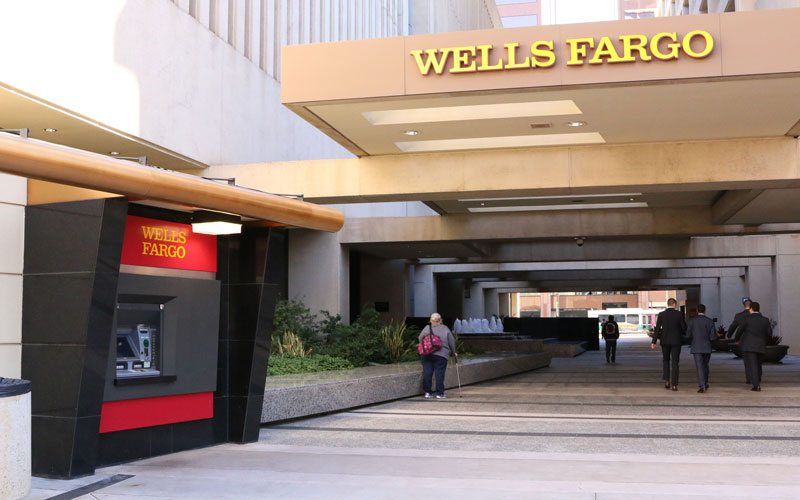
Photo of Wells Fargo bank in downtown Phoenix on Feb. 11, 2015. (Photo by Domenico Nicosia/Cronkite News)
After months of anticipation, the Federal Reserve opted not to hike its key interest rate Thursday. The lack of action makes this the longest period in the nation’s current economic history not to do so.
The news may come as a sigh of relief to many Arizonans, as the state’s economy relies heavily on the housing market – and some experts said a rate increase could put a damper on sales.
The median listing price in the Phoenix area has increased by 15 percent since this time last year, according to Movoto.com, a real estate site. And a higher interest rate could make it even harder for potential buyers to receive a housing loan. It also could deter developers from constructing new home sites.
Many experts said Thursday’s decision postpones the inevitable.
However, Dennis Hoffman, professor of economics at the W.P. Carey School of Business at Arizona State University, said the rate increase would have been minimal. And when it does go into effect, it will have little economic impact.
“There won’t be a dramatic effect,” he said. “You are going to find a conducive environment for home and car purchases because there aren’t basic inflation pressures.”
For the time being, the rate will remain at 0 to 0.25 percent, the same level it’s been since December 2008 after the Great Recession. The 9-1 decision indicates the U.S. economy is not healthy enough to handle increased interest rates, according to a news release from the Board of Governors of the Federal Reserve System.
“(It) will be appropriate to raise the target range for the federal funds rate when it has seen some further improvement in the labor market,” the statement said.
The statement noted that while there is moderate growth in industries such as housing and consumer spending, the figures are not high enough to justify forcibly slowing down.
While gross domestic product increased by 3.7 percent in the second quarter of 2015, it would be one of the lowest points used for an interest rate increase. In fact, out of the 118 rate hikes since 1950, only twice has the nominal year-over-year GDP been below 4.5 percent, according to Deutsche Bank.
And while the unemployment rate remains low at 5.1 percent, Hoffman said it’s a bit misleading.
“Many people are underemployed or not working at the jobs they are aspiring to,” Hoffman said. “The figure isn’t really reflective of the true economy right now.”
Another aspect is the inflation rate. Raising rates acts as a fix for too much money in circulation, yet the month-to-month inflation figure in August actually fell actually fell 0.1 percent, according to the Labor Department’s Bureau of Labor Statistics, making a rate hike seem unnecessary.
The Federal Reserve, led by Chairwoman Janet Yellen, manipulates the federal fund rate – the rate banks can charge each other to lend money overnight – to slow or speed up the country’s economic growth.
A low interest rate makes it easier to receive a car or home loan, incentivizing growth and spending. A higher interest rate ensures the economy isn’t growing too fast.
The last time the Fed decided to raise interest rates was 2006 – when MySpace dominated social media and George W. Bush served as president.
According to Deutsche Bank, the average time the Fed has waited since the ending of a recession to hike rates is 22 months. Now, it’s been 74 months and counting.